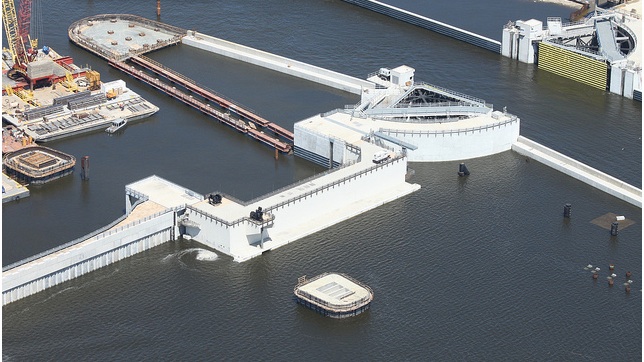
With the June 1 opening of hurricane season just days away, metro area residents have gotten a double dose of good news from the U.S. Army Corps of Engineers.
The agency has solved the yearlong puzzle of the cantankerous barge gate in the Lake Borgne Storm Surge Barrier, finally managing to open and close the structure successfully for the first time.
Just as important: The state will not have to assume responsibility on June 1 for other gates within the post-Katrina Hurricane and Storm Damage Risk Reduction System, as planned.
Instead, the state will take charge of the Seabrook gate complex sometime after mid-June while the corps continues to operate and maintain everything else, including the three gates on the Lake Borgne Surge Barrier and the huge West Closure Complex. That arrangement will be in place until further notice, probably after the end of hurricane season, according to the corps and officials at the Southeast Louisiana Flood Protection Authority — East.
The state has maintained that because the gates in the Hurricane and Storm Damage Risk Reduction System are for shipping, by law the corps has responsibility for them, just as it does for older, federally-built gates that are part of the city’s flood defense.
The barge gate is a structure designed to close a bypass channel used by shipping when the main gate is closed for repairs, about once every 10 to 15 years. The “barge” in its name comes from the gate’s main component — a giant concrete barge, 190 feet long, 70 feet wide and 44 feet deep — that is swung into the opening then filled with water and sunk to close the gap in the barrier.
But problems with the efficacy of the design as well as its construction have dogged the structure since its installation before the 2012 storm season. It failed all attempts to complete an open-close-open cycle without breakdowns. That changed on May 6 with the successful test.
Chris Gilmore, chief project manager for the corps, said his crews have opened and closed the gate successfully several times in the weeks since. Crews continue to train on the structure, Gilmore said.
In an email response Gilmore said minor issues came up during operations: “Some gauges and sensors were faulty and have been repaired/replaced,” he wrote. But, he stressed, “It’s important to understand none of this prevents the operation of the barge gate.” Bob Turner, regional director of the flood authority confirmed Gilmore’s report.
Getting the corps to retain responsibility for most of the system through this hurricane season was a major goal of the state. Success gives the flood authority some immediate financial relief, and it provides time to make the change permanent in legislation currently working its way through congress.
The state has maintained that since the gates in the Hurricane and Storm Damage Risk Reduction System are for shipping along the Intracoastal Waterway, by law the corps has responsibility for them, just as it does for older, federally-built gates that are part of the city’s flood defense.

